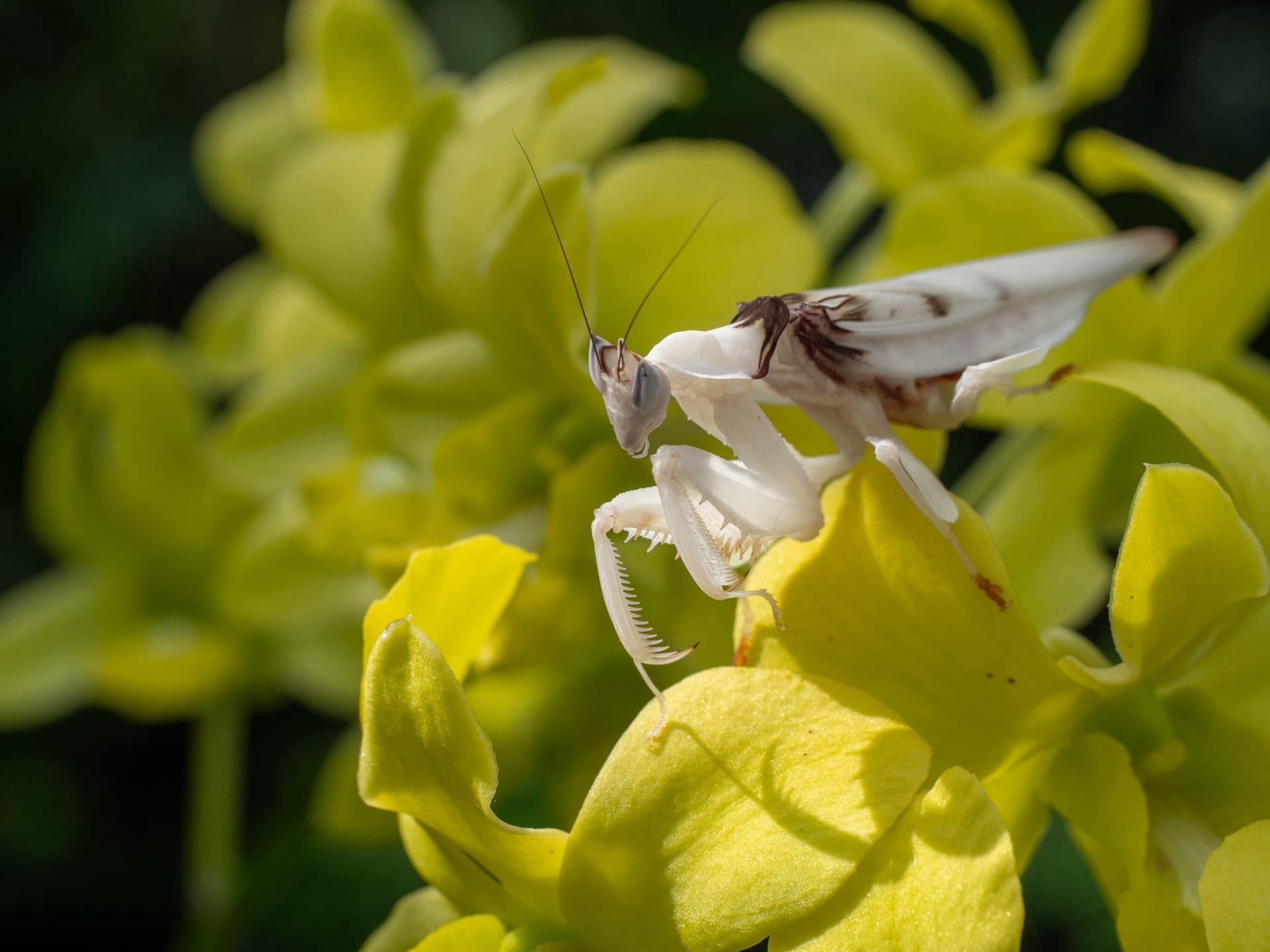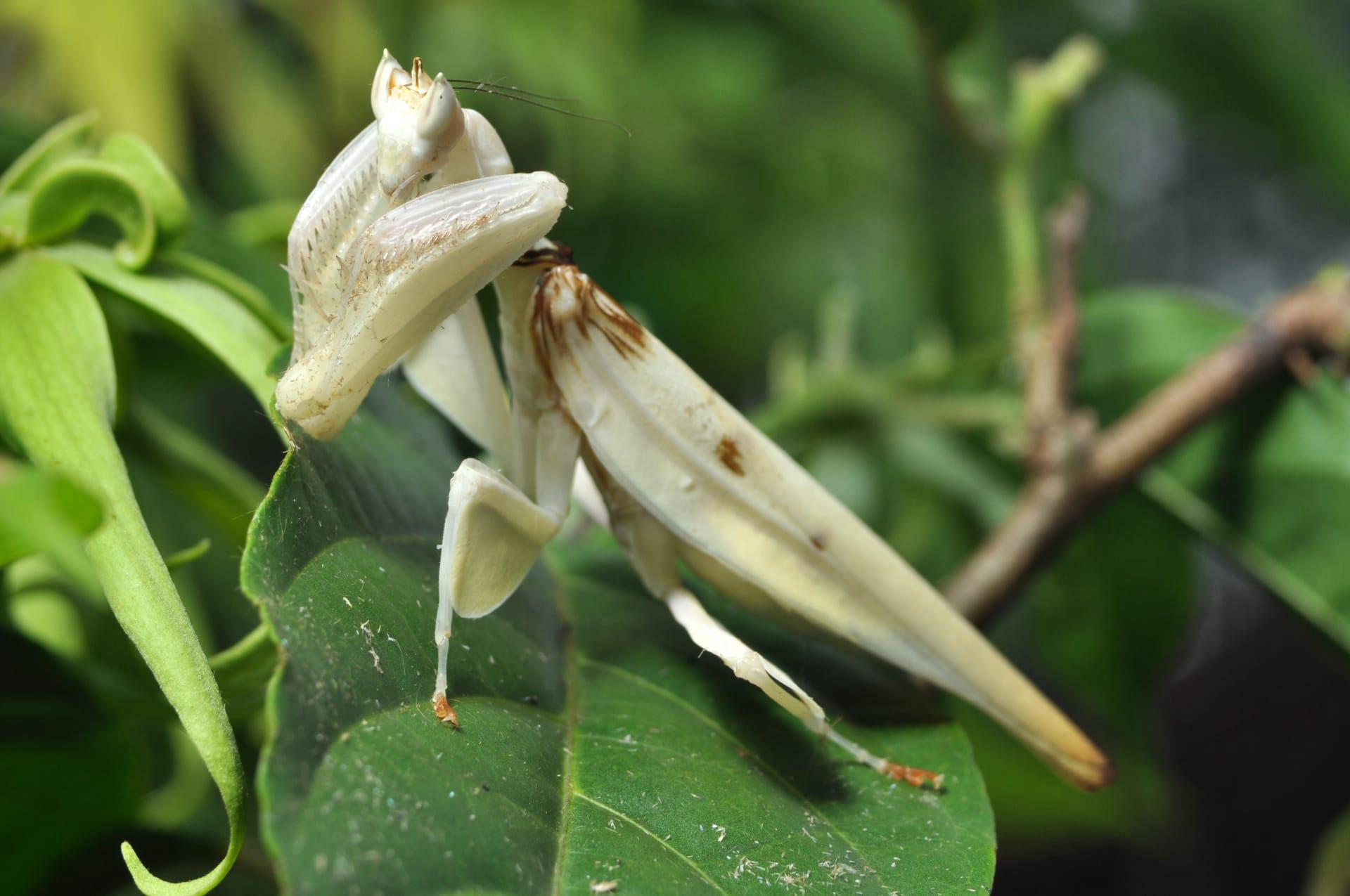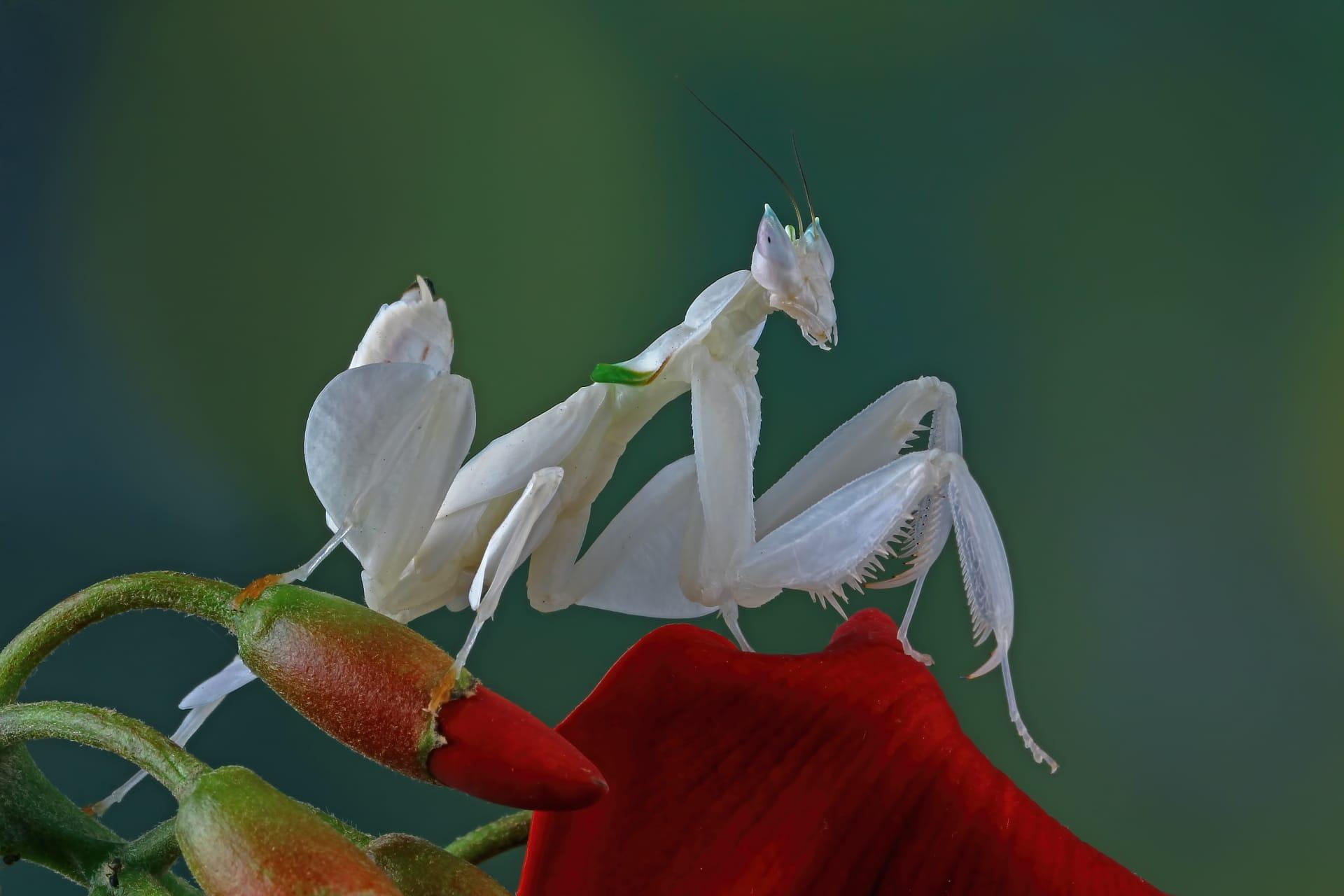Orchid Mantis
- Home /
- Mini Encyclopedia /
- Animal /
- Orchid Mantis
1
The Orchid Mantis, scientifically known as Hymenopus coronatus, belongs to the family Hymenopodidae. This species is renowned for its striking resemblance to orchids, an adaptation that aids in camouflage and hunting. Adult females can grow up to about 7 centimeters (2.75 inches) in length, while males are generally smaller, reaching about 3 centimeters (1.18 inches). Their coloration varies from white to pink and even shades of purple, mirroring the hues of orchids. This remarkable mimicry not only makes them visually appealing but also an intriguing subject of study in the field of entomology.
The Orchid Mantis is primarily found in Southeast Asia, with a distribution encompassing countries like Malaysia, Indonesia, Thailand, and Myanmar. These regions are known for their lush, tropical forests and an abundance of flowering plants, providing the perfect habitat for the Orchid Mantis. They thrive in warm, humid environments, often seen perched on orchids and other flowers. Their presence in these areas is not just a result of the ideal environmental conditions but also due to the abundance of prey, which includes pollinators drawn to the flowers they mimic.

2
Question: Is the Orchid Mantis only found on orchid plants?
Answer: A common misconception about the Orchid Mantis is that it exclusively resides on orchid plants. In reality, while their appearance is indeed a remarkable mimicry of orchids, these mantises are not limited to orchids alone. They are often found on various types of flowering plants, where their unique appearance allows them to blend in seamlessly. This adaptation is primarily a hunting strategy, enabling them to ambush unsuspecting prey, typically pollinators like butterflies and bees. The Orchid Mantis's ability to camouflage extends beyond just orchids, showcasing their versatility and adaptability in different floral environments.

3
The Orchid Mantis employs a unique survival strategy that revolves around its exceptional mimicry. By resembling the flowers among which they reside, they create an effective ambush site for catching prey. This form of aggressive mimicry is not just about blending in; it's about actively attracting prey. Pollinators, mistaking the mantis for a flower, approach unwittingly, only to be swiftly captured by the mantis. This strategy is especially effective as it allows the mantis to conserve energy by remaining stationary and waiting for prey to come to them, rather than actively hunting.
Another aspect of the Orchid Mantis's survival strategy is their ability to change color. This color change, though not as rapid as some other species, enables them to adapt to different environments and flowering plants. The color adaptation is more pronounced in females due to their larger size and the need for more effective camouflage. This adaptive coloration plays a crucial role in both predation and protection, as it helps them evade predators and increases their efficiency as predators themselves.

4
In the ecosystem, the Orchid Mantis plays a dual role of predator and prey, contributing to the balance of the ecological community. As predators, they help control the population of pollinators and other small insects, which can influence the pollination dynamics in their habitats. This predatory behavior, while seemingly detrimental to pollinators, actually plays a part in the natural regulation of insect populations, contributing to ecological stability.
The Orchid Mantis also serves as prey for larger animals, including birds and larger insects. Their role as prey adds another layer to the food web, supporting the survival of their predators. Additionally, their presence indicates a healthy, biodiverse ecosystem, as they thrive in environments with abundant floral growth and insect activity. Thus, the Orchid Mantis is not just a fascinating example of mimicry but also an integral component of its ecological niche.

5
Film: "Masters of Disguise: The Orchid Mantis" is a documentary produced in the United States in 2021. It delves into the unique world of the Orchid Mantis, focusing on its extraordinary mimicry and survival strategies. The film explores various Southeast Asian habitats, showcasing how these mantises use their appearance to attract and ambush prey. It also touches on the role of these insects in the broader ecological system and their interaction with other species.
Book: "Hidden in Plain Sight: The Orchid Mantis and Other Marvels of Nature" is a comprehensive guide by American author and biologist Dr. Linda Greene, published in 2020. This book offers an in-depth look at various mimicking creatures, with a significant focus on the Orchid Mantis. Greene examines the evolutionary advantages of mimicry and its impact on survival, providing a detailed analysis of the Orchid Mantis's behavior, habitat, and role in the ecosystem.
Book: "The World of Insect Mimicry" by British entomologist James Hargreaves, published in 2019, is a fascinating exploration of mimicry in the insect kingdom. A substantial portion of the book is dedicated to the Orchid Mantis, highlighting its mimicry mechanism and comparing it with other mimicking insects. Hargreaves provides a global perspective on the subject, blending scientific research with captivating photographs and illustrations.